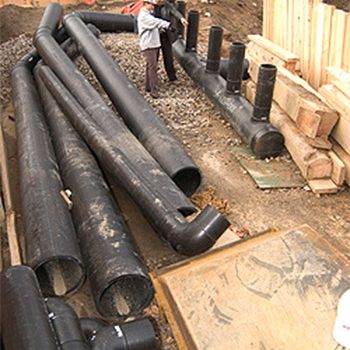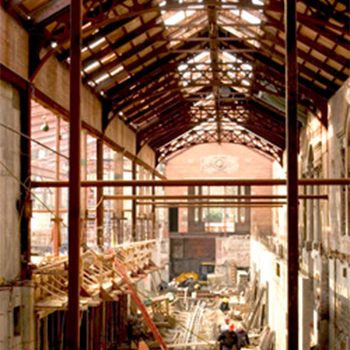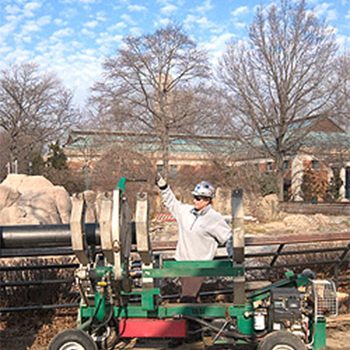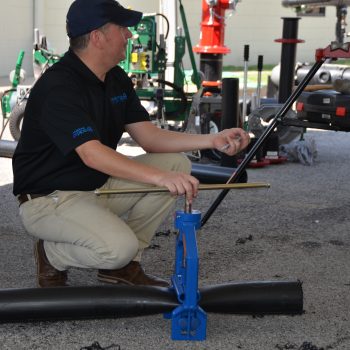Bronx, New York — The 265 acres that make up the Bronx Zoo have long been an oasis in contrast to the miles of concrete cityscape that surround it. The Zoo began in 1895 with the establishment of the New York Zoological Society (renamed Wildlife Conservation Society in 1993), with the purpose of advancing the study of zoology, protecting wildlife around the world and educating the public. Now the Wildlife Conservation Society (WCS) is taking the inner city getaway a step further by adding a “green building” to its long list of accomplishments. Currently, WCS is managing a $50 million renovation that will transform part of the zoo into the magnificent Island of Madagascar. Additionally, the project will carry the distinction of being the first landmarked building in New York City to be certified “green” by the U.S. Green Building Counsel (UGBC).
The Bronx Zoo’s Lion House will be reopened after a decade of non use in the spring of 2007 as the new Madagascar exhibit. The Lion House was opened in 1903 and has been designated a National Historic District by the New York City Landmarks Commission. This heavily ornamented building was part of a group of buildings built between 1899 and 1920 that epitomized the Daniel Burnhham’s City Beautiful Movement. The design of the new exhibit will preserve the architectural craftsmanship of the original building while incorporating the latest construction technologies and green building practices available.
This project is bringing together two of the most powerful movements in architecture
One of the key elements to the success of the project is its high density polyethylene (HDPE) piping systems. HDPE is being used to circulate large volumes of water throughout the exhibit. It is also being used for the five 1,500 foot deep geothermal wells for heating and cooling. The geothermal systems will be relied upon to create the environmental temperatures found in a tropical rainforest.
“This project is bringing together two of the most powerful movements in architecture,” said Shelby Heritage of ISCO Industries, which inspired the concept of HDPE pipe for the project. “The restorations of a landmarked building, along with incorporating green-building practices are accomplishments that the city of New York can be very proud of.”
HDPE was chosen for its material properties that meet the “green” goals of sustainability. The pipe is non-corrosive and connected together with heat fusion to insure the pipe will not develop leaks or allow infiltration at its connection points. But perhaps the strongest advantage of the pipe is its long life expectancy and zero maintenance reputation. Most of the pipeline will be buried under small confined areas that will be immaculately landscaped. The costs associated with excavating these areas in the future to repair leaks or failures, would be astronomical.
“The biggest reason they chose to use polyethylene for the pipe systems is that they will never have to repair it,” said Chuck Connor, Sr. Project Manager for WDF Inc. the mechanical and plumbing contractor performing the pipeline work. “You just put polyethylene pipe in the ground and forget about it.”
One challenging aspect of the piping system is the seawater supply line for the sea lion pool which is adjacent to the Madagascar exhibit. Salt water is pumped from a filtration system through 16″ HDPE to six intake and return stubs located in the wall of the pool.
“The location of the pipeline serving the sea lion pool was extremely cramped,” said Connor. “With such limited space, the staging of the project was crucial.” Crews first excavated and shored the ditch in preparation. The heavy equipment was then removed to allow space for a fusion staging area. The complex angles of the ditch along with frequently spaced shoring braces required much of the pipe system to be fabricated on site and several of the fusion joints had to be performed in the ditch.
“Because of the cramped installation, and difficulty of working in the ditch, WCS could have probably saved a little money using another piping material,” said Connor. “But this pipe is more environmentally sound and will last longer than any other pipe out there and that’s the way WCS does things – they build once, to last forever.”
“HDPE pipe is rapidly gaining acceptance in the water industry as a water conservation tool because of its leak free reputation,” said Heritage. “Now projects like the Madagascar exhibit at the Bronx Zoo are displaying that the pipes long life expectancy holds to the green standards of sustainability. When lifecycle costs are considered for any piping project, HDPE wins the bid hands down.”
The Bronx Zoo secured its place as one of the foremost zoos in the world long before anyone envisioned the Island of Madagascar exhibit. But by taking the extra measures to insure the exhibit stands up to the standards of the U.S. Green Building Counsel, it is evident that administrators of the Zoo are holding to the original mission of conservation when the Zoo was founded back in 1885.




